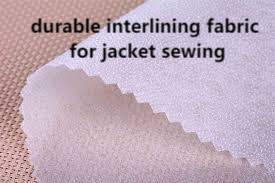The Foundation of Modern Apparel
In the world of textile production, unseen components often play the most significant roles. Among these essential elements is Interlining , a hidden layer that reinforces and enhances garments from within. Acting as the structural backbone in both fashion and industrial apparel, interlining helps ensure a polished, high-quality finish while improving comfort and durability. Though not visible in the final product, its influence is felt in every fold, seam, and silhouette.
Strength Behind the Style
Clothing that holds its shape, fits well, and endures repeated use often owes its resilience to what’s beneath the fabric's surface. Internal layers provide much-needed support, maintaining the integrity of garments from casual wear to formal suits. These inner layers add stiffness or softness where needed, preventing fabric distortion and ensuring the garment drapes as intended.
Enhancing Tailoring Techniques
Precision tailoring relies on more than cutting and sewing; it depends on components that respond well to pressing, stitching, and shaping. Supporting layers must be compatible with various outer fabrics, from lightweight cotton to heavyweight wool. Their application allows tailors and manufacturers to craft sleek lapels, crisp collars, and sharp pleats with greater ease and consistency.
Expanding Industrial Applications
Beyond fashion, internal fabric reinforcements find use in uniforms, protective clothing, and even automotive textiles. Their function ranges from improving thermal regulation to increasing garment lifespan. In high-demand industries, products must withstand pressure, moisture, or frequent cleaning — internal layers contribute to meeting those standards without sacrificing comfort or appearance.
Sustainable Material Integration
As sustainability becomes a core focus of the textile industry, the materials used beneath the surface are also being re-evaluated. Biodegradable fibers, recycled content, and environmentally friendly adhesives are becoming common features in supporting textile layers. Their integration aligns durability with eco-conscious practices, addressing growing consumer demand for responsible manufacturing.For more information, visit: https://www.interlining-factory.com/news/what-is-interlining-types-applications-and-more.html

